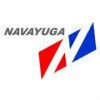Filter interviews by
TRACKS AND TOWERS INFRATECH Project Manager Interview Questions and Answers
TRACKS AND TOWERS INFRATECH Project Manager Interview Experiences
1 interview found
I applied via Naukri.com and was interviewed in Feb 2024. There were 2 interview rounds.
(2 Questions)
- Q1. Reinforcement Details
- Q2. Drawings study Ceintering and centreline and slabs steel drawings
Regarding my previous experience in different construction projects
Interview Preparation Tips
Top trending discussions






Interview questions from similar companies

I applied via Walk-in and was interviewed before Jul 2020. There were 4 interview rounds.
Interview Questionnaire
1 Question
- Q1. Education and previous work details
Interview Preparation Tips

Assistant Manager Interview Questions & Answers
S P Singla Constructionsposted on 10 Oct 2024
(1 Question)
- Q1. Accounts related

Assistant Manager Interview Questions & Answers
Ramky Infrastructureposted on 10 Nov 2021
Interview Questionnaire
4 Questions
- Q1. What will you do when material is not received in time at site ?
- Ans.
I will assess the situation and take necessary actions to minimize the impact on the project timeline.
Check with the supplier for the reason of delay and expected delivery date
Evaluate the impact on the project timeline and inform the project team
Explore alternative options such as sourcing from a different supplier or adjusting the project schedule
Communicate the revised plan to all stakeholders and ensure timely deli...
- Q2. How do you manage the team ?
- Ans. Should maintain proper communication between team members. Good planning assists allocation of work responsibilities to team members, also it avoids irrational approach and duplication of works. As a best team player can complete the project within a specified time and budget.
- Q3. How do you calculate the cement and sand for 1 sqm cm 1:4?
- Ans.
To calculate cement and sand for 1 sqm cm 1:4, use the formula: (1/5.5) * 1 = 0.18 cubic meters of cement and (4/5.5) * 1 = 0.73 cubic meters of sand.
The ratio of cement to sand is 1:4
Calculate the total volume of the mixture, which is 1 sqm cm
Divide the total volume by the sum of the ratio (1+4=5)
Multiply the quotient by the individual ratio to get the volume of cement and sand
Convert the volume to weight using the de
- Q4. What is price escalation?
- Ans.
Price escalation refers to the increase in the price of goods or services over time.
It is a common phenomenon in the market due to inflation, changes in demand and supply, and other economic factors.
Price escalation can also occur due to changes in the cost of production, such as raw material costs, labor costs, and transportation costs.
For example, the price of gasoline may escalate due to an increase in the cost of c...
Interview Preparation Tips

Assistant Manager Interview Questions & Answers
Ramky Infrastructureposted on 13 Aug 2022
I applied via Approached by Company and was interviewed in Jul 2022. There was 1 interview round.
(2 Questions)
- Q1. What is my strength?
- Ans.
My strength is my ability to lead and motivate a team towards achieving goals.
Effective communication skills
Strong decision-making abilities
Ability to delegate tasks efficiently
Positive attitude towards challenges
Experience in managing teams
Motivational skills
Goal-oriented mindset
- Q2. What is my weakness?
Interview Preparation Tips
- Technicals

Assistant Manager Interview Questions & Answers
Ramky Infrastructureposted on 29 Dec 2023
I applied via Walk-in and was interviewed before Dec 2022. There were 2 interview rounds.

(1 Question)
- Q1. Nothing just basic information and then they are conducting technical round based on your profile or department
Interview Preparation Tips

I applied via Job Portal and was interviewed in Jun 2024. There were 2 interview rounds.
Make a some question.
Discus with condidate for how to handle a challenge at site level
Interview Preparation Tips

I applied via Recruitment Consulltant and was interviewed in Sep 2024. There was 1 interview round.
(7 Questions)
- Q1. What are the Pump head loss calculation parameters
- Ans.
Pump head loss calculation parameters include friction loss, elevation change, velocity head, and fittings.
Friction loss due to pipe roughness
Elevation change between inlet and outlet
Velocity head due to fluid velocity
Losses from fittings like elbows, tees, and valves
- Q2. What is the AHU components
- Ans.
AHU components refer to the various parts of an Air Handling Unit that work together to regulate and circulate air in a building.
Filters - to remove dust and particles from the air
Coils - for heating or cooling the air
Fans - to circulate the air
Dampers - to control the flow of air
Humidifiers/dehumidifiers - to adjust the humidity levels
- Q3. Which type of blowers are use in AHU
- Ans.
Centrifugal blowers are commonly used in AHUs for their efficiency and ability to handle high volumes of air.
Centrifugal blowers are preferred for AHUs due to their ability to handle high volumes of air efficiently.
They are more energy efficient compared to other types of blowers.
Examples of centrifugal blowers commonly used in AHUs include forward curved, backward inclined, and airfoil designs.
- Q4. What is the difference between primary pump or secondary pump
- Ans.
Primary pump is the main pump responsible for the majority of the pumping work, while secondary pump is a backup pump used in case the primary pump fails.
Primary pump is the main pump in a system, while secondary pump is a backup pump.
Primary pump is responsible for the majority of the pumping work, while secondary pump is used only when needed.
Examples: In a heating system, the primary pump circulates hot water throug...
- Q5. What is the AHU valve conection
- Ans.
AHU valve connection refers to the connection of valves in an air handling unit for controlling the flow of air.
AHU valve connection is essential for regulating the flow of air in an air handling unit.
Valves are typically connected to the AHU ductwork to control the amount of air entering or exiting the unit.
Properly connected valves ensure efficient operation of the AHU system.
Examples of AHU valves include damper val
- Q6. What things are required in chilled water pipe size
- Ans.
Chilled water pipe size requirements depend on flow rate, pressure drop, material, insulation, and system design.
Flow rate: Determine the required flow rate of chilled water in the system.
Pressure drop: Calculate the pressure drop to ensure efficient operation.
Material: Select appropriate pipe material based on temperature and pressure requirements.
Insulation: Insulate the pipes to prevent heat gain or loss.
System desi...
- Q7. What is the chiller conection
- Ans.
The chiller connection refers to the method by which a chiller unit is connected to a building's HVAC system.
Chiller connection typically involves piping to transport chilled water from the chiller to the building's air handling units.
The connection may also include electrical wiring for power supply and control signals.
Proper chiller connection is crucial for efficient cooling and proper functioning of the HVAC system
Interview Preparation Tips
- prepare in HVAC chiller system

Project Manager Interview Questions & Answers
Oceaneering Internationalposted on 17 Jul 2024
Questions on resource management
Senarios about work and attitue
Interview Preparation Tips

I applied via Approached by Company and was interviewed before Feb 2022. There were 2 interview rounds.

(3 Questions)
- Q1. What is refrigeration cycle? Commissioning stages of Data center?
- Ans.
The refrigeration cycle is a process that removes heat from a space and transfers it to the external environment.
The refrigeration cycle consists of four main components: compressor, condenser, expansion valve, and evaporator.
The compressor compresses the refrigerant gas, raising its temperature and pressure.
The high-pressure refrigerant then flows to the condenser, where it releases heat to the surroundings and conden...
- Q2. What is chilled water system? Types of ac system?
- Ans.
A chilled water system is a cooling system that uses chilled water to remove heat from a building or process.
Chilled water systems use water as a cooling medium.
They typically consist of a chiller, chilled water pumps, and a distribution system.
Chilled water is circulated through coils or heat exchangers to cool air or equipment.
Chilled water systems are commonly used in large commercial buildings, data centers, and in...
- Q3. Types of pumps? Types of compressor
- Ans.
Types of pumps include centrifugal pumps, reciprocating pumps, and rotary pumps.
Centrifugal pumps use centrifugal force to move fluid through a system.
Reciprocating pumps use a piston or diaphragm to create pressure and move fluid.
Rotary pumps use rotating mechanisms to transfer fluid.
Other types of pumps include gear pumps, peristaltic pumps, and vane pumps.
Interview Preparation Tips
Study the jd
Introduce yourself in a good way
Dont use extra pause during explanation.
Should be well dressed
Use the language in whic you are comfortable
Skills evaluated in this interview
TRACKS AND TOWERS INFRATECH Interview FAQs
Tell us how to improve this page.
TRACKS AND TOWERS INFRATECH Interviews By Designations
- TRACKS AND TOWERS INFRATECH Project Manager Interview Questions
- TRACKS AND TOWERS INFRATECH HR Executive Interview Questions
- TRACKS AND TOWERS INFRATECH Senior Engineer Interview Questions
- TRACKS AND TOWERS INFRATECH Auto CAD Designer Interview Questions
- TRACKS AND TOWERS INFRATECH Electrical Designer Interview Questions
- TRACKS AND TOWERS INFRATECH Signalling Design Engineer Interview Questions
- TRACKS AND TOWERS INFRATECH Quality Manager Interview Questions
Interview Questions for Popular Designations
- Project Engineer Interview Questions
- Project Coordinator Interview Questions
- Project Lead Interview Questions
- Project Associate Interview Questions
- Senior Project Manager Interview Questions
- Senior Project Engineer Interview Questions
- Assistant Project Manager Interview Questions
- Project Engineer - Civil Interview Questions
- Show more
TRACKS AND TOWERS INFRATECH Project Manager Interview Process
based on 1 interview
Interview experience
Project Manager Interview Questions from Similar Companies
TRACKS AND TOWERS INFRATECH Project Manager Reviews and Ratings
based on 1 review
Rating in categories
|
Civil Site Engineer
24
salaries
| ₹1.8 L/yr - ₹4.2 L/yr |
|
Site Engineer
20
salaries
| ₹1.8 L/yr - ₹4.8 L/yr |
|
HR Executive
15
salaries
| ₹2.6 L/yr - ₹4.5 L/yr |
|
Store Incharge
14
salaries
| ₹3.7 L/yr - ₹6.8 L/yr |
|
Civil Engineer
8
salaries
| ₹3 L/yr - ₹6 L/yr |

Sterling & Wilson

Nasser S. Al Hajri Corporation

Navayuga Engineering Company

Ramky Infrastructure
- Home >
- Interviews >
- TRACKS AND TOWERS INFRATECH Interview Questions >
- TRACKS AND TOWERS INFRATECH Project Manager Interview Questions









